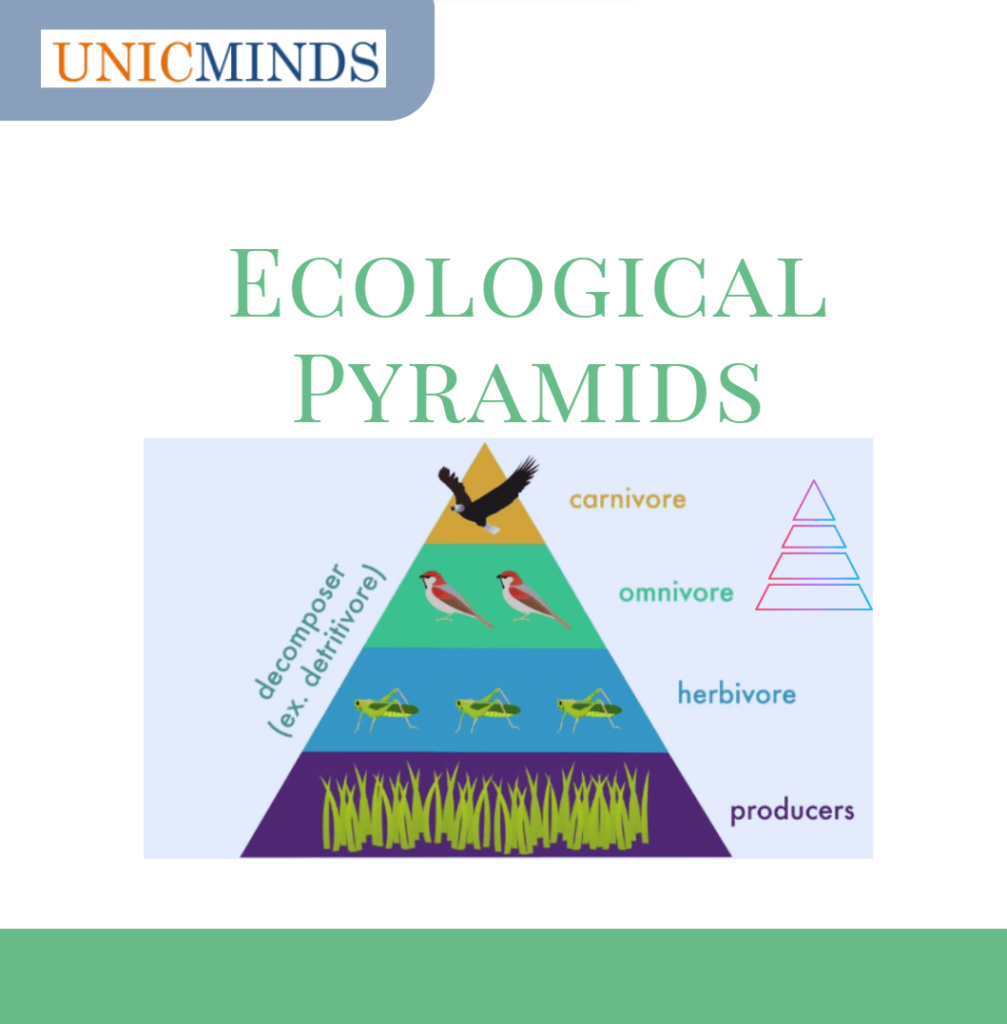All living beings use a source of energy for their living needs. Depending on where a particular living being is drawing its energy from, the living being sits in that particular layer in the entire space of all the animals present in this world. When you plot this on a paper and mark animals depending on where they draw their energy from and the number of such animals in population, then you will see a distinct pyramid like the one below. This means the ones who are at the bottom are plenty in number and the ones at the top are fewer and fewer.
An ecological pyramid is a graphical representation of the relationship between various living beings at various trophic levels within a food chain. It starts with green plants using sunlight through the process of photosynthesis to transform carbon dioxide and water into energy-rich glucose. This glucose in the form of carbohydrates makes up the tissues of the plant and these plants are in turn eaten by various herbivores. This energy gets transferred up the food chain to the top carnivores.
Types of ecological pyramids
There are three different types of pyramid of energy, pyramid of biomass, and pyramid of numbers.
Pyramid of Energy
The pyramid of energy represents the flow of energy through the trophic levels of an ecosystem. It illustrates the decreasing amount of energy available at each successive trophic level. Since energy is lost as heat during metabolic processes, only a fraction of the energy from one trophic level is transferred to the next (10% rule). As a result, the pyramid of energy always takes the shape of a pyramid, with the producer level at the base and top carnivores at the apex.
Pyramid of Biomass
The pyramid of biomass represents the total amount of living or organic matter present at each trophic level. It shows the decreasing biomass as we move up the food chain. Biomass includes the combined weight of all organisms (plants and animals) in a particular trophic level. The pyramid of biomass is upright for a terrestrial ecosystem but is inverted for an aquatic ecosystem. The inverted pyramid of biomass occurs due to the high productivity of phytoplankton, which are small photosynthetic organisms at the base of the food chain.
Pyramid of Numbers
The pyramid of numbers represents the number of individuals at each trophic level. It depicts the population size of organisms present at different levels of the food chain. The pyramid of numbers can be inverted (in some cases), indicating a larger number of primary consumers than producers. This occurs when the producers are large in size and few in number, while the consumers are small and numerous. For example, a parasitic food chain.
Conclusion
Even when we directly don’t see it with our naked eyes, our ecosystem is organized as a pyramid with fewer stuff being passed from one layer to the next layer. The most important thing an ecological pyramid tells us is the extent of an impact in one layer onto the next set of layers. Any drastic change in one layer significantly affects the other layers. If the conditions of an ecosystem are found to be deteriorating over time due to human pollution or overhunting, action can be taken to prevent further damage and possibly reverse some of the current damage.




